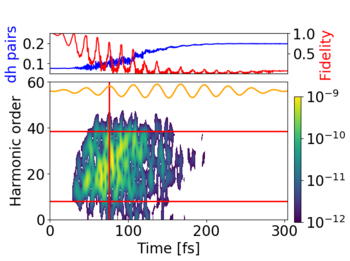Of particular interest for modern material research in solid state physics are "strongly correlated systems", so called for the strong interactions between the electrons in these materials. Magnets are a good example of this: the electrons in magnets align themselves in a preferred direction of spin inside the material, and it is this that produces the magnetic field. But there are other, entirely different structural orders that deserve attention. In so-called Mott insulators for example, a class of materials now being intensively researched, the electrons ought to flow freely and the materials should therefore be able to conduct electricity as well as metals. But the mutual interaction between electrons in these strongly correlated materials impedes their flow and so the materials behave as insulators instead.
By disrupting this order with a strong laser pulse, the physical properties can be made to change dramatically. This can be likened to a phase transition from solid to liquid: as ice melts, for example, rigid ice crystals transform into free-flowing water molecules. Very similarly, the electrons in a strongly correlated material become free to flow when an external laser pulse forces a phase transition in their structural order. Such phase transitions should allow us to develop entirely new switching elements for next-generation electronics that are faster and potentially more energy efficient than present-day transistors. In theory, computers could be made around a thousand times faster by "turbo-charging" their electrical components with light pulses.
